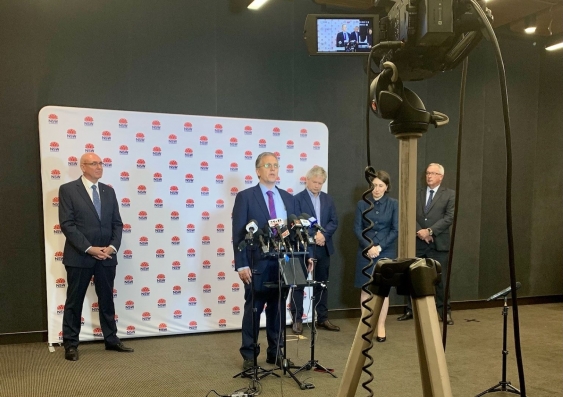NSW looks to lead the way with mRNA vaccines
UNSW academic to provide advice to the NSW Government on plans to manufacture mRNA vaccines locally.
UNSW academic to provide advice to the NSW Government on plans to manufacture mRNA vaccines locally.

UNSW Sydney Professor Palli Thordarson has joined NSW Premier Gladys Berejiklian, NSW Health Minister Brad Hazzard, NSW Chief Health Officer Dr Kerry Chant and leading experts in mRNA technology to discuss how NSW can create a new medical manufacturing and research industry.
Both the Pfizer and Moderna vaccines use mRNA technology. However, Australia currently has no long-form RNA manufacturing capacity.
Prof. Thordarson said creating a new medical manufacturing and research facility would be an important step in securing Australia’s sovereign capability to develop and manufacture life-saving drugs and novel therapeutics, including mRNA vaccines such as the Pfizer COVID-19 vaccine.
“An mRNA manufacturing capability would position Australia as a leader in the global research effort to combat emerging vaccine-resistant viruses, such as new COVID-19 variants, as well as building sovereign capability in the innovation, development and manufacture of life-saving RNA therapeutics,” Prof. Thordarson said.
“More importantly, this is not just about mRNA vaccines. They are only the tip of the iceberg in terms of a whole range of RNA therapeutics that are revolutionising medicine. This includes other uses for mRNA – long-form RNA to treat hereditary diseases, and various short-form RNA to treat cancers and other diseases including HIV and even COVID-19 infections.”
UNSW Dean of Science Professor Emma Johnston said: “We are thrilled to be working with the NSW Government, industry and academic partners to build national capacity in RNA therapies.
“Australia needs to make a sustained investment in this area, not only in biomanufacturing but also in the basic research that unlocks the potential of RNA and other cell therapies to prevent and cure disease. UNSW is home to some of the best scientific minds in the world in this field. Other nations are moving quickly, and Australia cannot afford to be left behind.”

Professor Pall Thordarson. Photo: UNSW.
Prof. Thordarson is an expert in nanomedicine and synthetic chemistry with a substantial history of working across research and industry. Since the beginning of the pandemic, he has been a leading advocate for advancing Australia's capabilities in RNA technologies, including R&D and manufacturing. He has contributed publicly to this discussion and to a report to the federal government which highlighted the need for a sustained investment in RNA Therapeutics for the prevention and cure of disease.
Unlike traditional vaccines which use an inactivated virus, messenger RNA (mRNA) vaccines teach cells how to make protein that triggers an immune response which provides protection from the real virus.
Premier Gladys Berejiklian said the pandemic has shown us how the private sector, universities and the NSW Government can work together to produce world-leading technology, new-generation therapies and life-changing research.
“NSW is well placed to provide the advanced manufacturing workforce training, the scientific expertise and the physical location of a future RNA-based manufacturing hub.
“The state has an established advanced manufacturing capability and is well placed to be the home of mRNA manufacturing in Australia.”
The meeting on manufacturing mRNA vaccines was attended by: